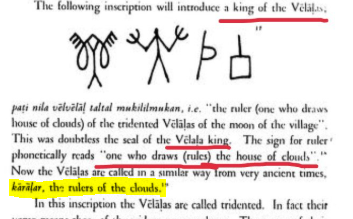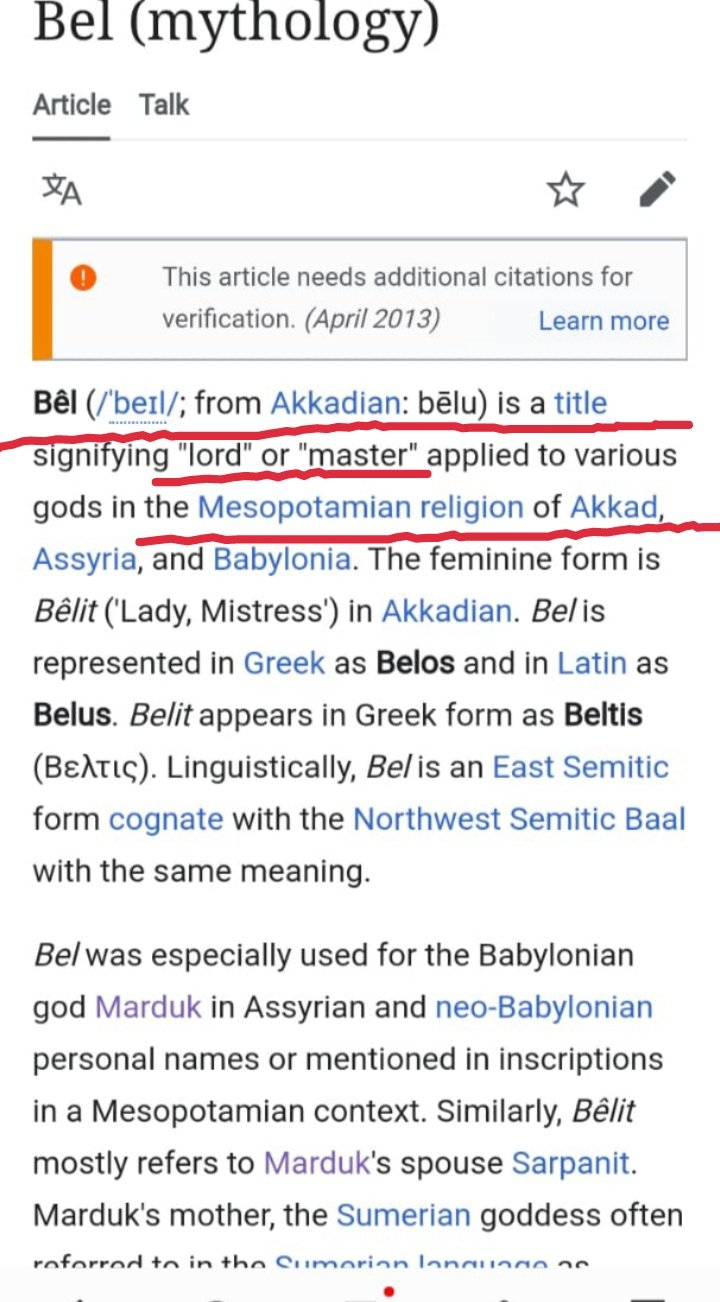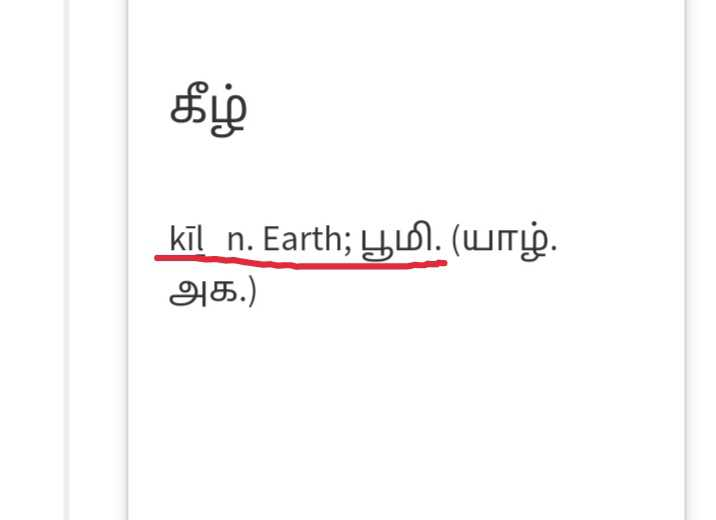Written By ,
Pulavar B.Karthick Raja Pillai
Thanks to Henry Heras of Spain and Yuri Knorozov of Russia
The Vellalars in Mohenjo-Daro - Henry Heras
13 Pages
From
Book Name - Indian Historical Quarterly Volume 14
Vellalas - Men of Trident (Trishul)
Mohenjo-Daro (An Indian Film based on Indus Valley Civilization )
Starring : Hrithik Roshan, Pooja Hegde, etc
As you can read, Heras have explained where Vellalars lived, their worship, their Kings and Surrounding tribes during Indus Valley Civilization
Here, Heras have written that Minas defeated Vellalars and Bhils and became their Kings
Heras in his later paperwork, Heras has explained How Vellalars defeated Minas and became King of both their country (Present UttarKhand, Himachal Pradesh, Punjab of India and Pakistan, Haryana, Northern UP) and Minas Country (Rajasthan).
Reference : "Mohenjo-Daro, the people and the land" by Heras
Also, As depicted in the Indian Movie, Indus Valley didn't flood or go under sea or river
Indus Valley Civilization is not about a Single City named Mohenjo-Daro
Then, Which land went under Ocean or Sea or River? What long standing legend of Pandyan Kings tell us?
Numerous Tamil Literature mentions Country of Pandyan Kings that went under Ocean or Sea
Also, Tamil Literatures mention him as the First King among Tamil Race or in this World
We could get the answer today for the long standing question
Be it be the Pandyan, Chola , Chera, and most of the Tamil Kings and petty Chieftains of Ancient and Medivial Tamil Regions belong to Vellalar Varna
Only, Vellalars, Paravas and some more "Non-Naga Groups" are Tamils by Ethnic
Heras had mentioned the ruler or Velalas as "Karalar"
Karalar are Sumerian Group, Not Tamils
Karalar means "Black Clouds"
In Tamil, "Black Head" also means "Black Clouds"
Sumerians have referred to themselves as "Black Heads"
So, clearly Karalar are Sumerians
While, Velir are Akkadians
"Bel" is the the title in Akkadian to denote "Kingship or Lord"
Among Velirs too, Vel is the title to denote Kingship
But, Vel in Tamil means "A type of agri tool", so Velalar are related to Agriculture
So, the title of "Velir Kings", which is "Vel" is of Akkadian "Bel" Origin and not Sumerian
Karalars are Sumerian,
Velir are Akkadian
Further, A Title for Landowners in Ancient Times is "Kilar", which is again of Sumerian Influence
Even to point Down to earth, "Kil" is used in Tamil, and Tubers like Potato, which grows under the ground are called "Kizhangu" in Tamil, which is of Sumerian Influence
Vellalas (Possibly mixed with Farmers from Sumeria) belong to Mediterranean Race. Vellalas carry J2 Y-DNA at high frequeny (Sub Clade - J2B2 M241 at 38 7%)
J2 Y-DNA is found at more than 30% in Iran, Iraq, Turkey, Greece, South Italy
In India, J2a Sub-Clade of J2 Y-DNA is found at high frequencies than J2b2 for many castes. J2a Y-DNA is absent among Vellalars. Also, J2a Y-DNA came to India through Parthian Empire
Kindly, Note that only Vellalas are categorized as "Dravidian Race" among Tamil Speakers. Nagas are of Australoid - Veddoid Race
To know more that genetics and racial history of Vellalars, Read this Blog
An Article about "Velalar Name Issue":
Sea-level History Map of Persian or Arabian Gulf
Clearly, It is visible that lands to the South of World's First Civilization - Sumeria, went under Ocean or Sea
Even Between 6000 B.C and 8000 B.C
Sumerian Civilization Flood History was well documented in their 4500 years old Clay Tablets
In Sumerian Civilization Tablets, It is explained that
A King named Ubara-Tutu, who ruled Sumeria, lost his lands to Sea or Ocean
His lineage named AntediluvIan Rulers, were the Early Royals of Sumeria
Though, the years they ruled were mentioned inappropriately in Sumerian Tablets. We are unable to predict the year he lived
However, In Gilgamesh Flood Epic,
Hero of epic, Gilgamesh meets Ubara-Tutu's Son - Utnapishim, who is said to have been lived at a long distance from Sumeria Civilization
Gilgamesh is predicted to have lived between 2900 B.C and 2700 B.C
So, UbarUbara-Tutu, definitely could have lived 3000 B.C Image Source : Studies by Morner, 1987
5000 BP is 3000 B.C
So, this research article coincides with the predicted period of Ubara-Tutu
Hence, from all the above studies, we can conclude that
Sumerian Ubara-Tutu Should be The Pandyan King mentioned in Tamil Sangam Literatures
Some people in media come around with Fake Lemuria Continent theory, to claim Fake Histories
It was much difficult for me,
I had to go through a lot of studies, find Ancient History and to reconstruct it, accordingly, it should have a continuous history
I have made these articles, based on years of search and studies
Though, the above image speaks of Fertile Crescent Migration Theory
This is the Migration History of Pandyan Kings and Karalars and Velir too
Whether Panydan Kings were Karalar or Velir or some other clan or group from the Sumerian Region is to be Studies further
And, Indus Valley Civilization started around 3300 B.C
From the above studies, we can even understand that it is Ubara-Tutu and his people, who reached India have started Indus Valley Civilization
That is, Karalar, Velir and Pandyan King with Sumerian Farmer People have reached India and started IVC
If this is so, then The Pandyan King though ruled Tamils and Nagas in South India from early times,
The Pandyan Royal Clan would not be of Dravidian or Tamil Origin, but of Sumerian Origin
To prove, Ubara-Tutu is the Pandyan King. We may even need some more theories or evidences. Though, the above studies are more than enough to conclude Ubara-Tutu is the Pandyan king
I will definitely be on my path to find Ancient History, which is the Ancient History Of Human Civilization on this World too
Thank you,
Pulavar Karthick Raja Pillai
What recent #Iron_Age findings in #Tamilnadu really tells?
My friend shared me an important notes,
In this world,
#Iron_Age is actually followed by #Copper_Age
But, in #TN, #Copper_Age_is_Missing
Which, tells what?
Which tells that,
"Some #Migrants or #Invaders who had known Iron usage has entered Tamil Nadu"
Sarada Srinivasan tells an hypothesis that IVC people could have entered TN and found Iron age, which is not possible
As the question will arise, then why no Iron Usage was found contemporarily at IVC
So, IVC Migration theory could be neglected
Which could be then?
Possibility is Sumerians could have migrated directly to Tamil Regions
Which Sumerians?
Note that, Hereby I am not declaring all Tamil Speakers are related to Sumeria and kanging
It only could be Velir Chieftains from Sumeria
Vel is a title used by Velir Chiefs to denote Lordship
But, Vel (வேள்) in Tamil is derived from Sanskrit or North Word - Bel (meaning Hoe - Agri tool)
And, so Vel or Velala means a Shudra, which is also a Sankrit word
(Refer Beldar Caste in North India)
Which clearly throws that, the Vel title of Velir has no origin in Tamil Society
Where, Vel - Lordship
But, it has origin in #Sumerian or #Akkadian
Where, #Bel was used as a title by Kings to denote #Kingship and #Lordship
I have written a blog, that how
The Southern Sunken Sumerian Region could be the "Kumari Kandam or The Tamil Land of Pandyas, which submerged into the sea"
Where, i have claimed that
An portion in Southern Sumeria was submerged around 3000 BC
IVC started around 3300,
So, Sumerian People could have started IVC
But, which could not possible
But, We could directly connect the
Iron Age in Tamilnadu around almost some 3200 BC?
And the Velir Cheiftains (A section of Velir are Irunkovel, Among them, a section today live as Nankudi Pillaimars, at the the same Sivagalai and Korkai Villages, where Iron Age tools are discovered)
While other part of Irunkovel (Kottai Pillais) claim to have migrated from Kashmir (Which is also to be noted, but not to be taken to understand Sumerian To TN Migration at 3000 BC)
So,
Further Studies and Findings could help us to concretely establish that
Pandyan King who lost his Kingdom to Ocean could be the King from Sumerian Civilization and
He should have arrived with Velir Chieftains and started to Rule Korkai or Sivagalai Regions at first
And then should have advanced to Madurai and made it their capital
Which could be also be useful in understanding the settlements in TN
In 1911, Risley (An British Ethnographer) has classified entire Vellala Varna (Which actually also composed of Velir and Saiva Pillais (Magadhis) in TN) as Dravidians
And have given explanation that Dravidian Race as "Indo-Mediterraneans", who could have arrived from Mesopotamia or Arabia to Tamilnadu (I have attached the details in comments)
So, if Sumerians did speak Tamil, then only the Sumerian Velir who have invaded Native Southern Indian Population could be Tamils
Else, If Sumerians did not speak, then the native population could be Tamils
While the later, has very less chance
Anyhow, let us wait for any further findings and further studies could get us more new things, which could break our perception of many things in this state
Sarada Srinivasan Notes :










































